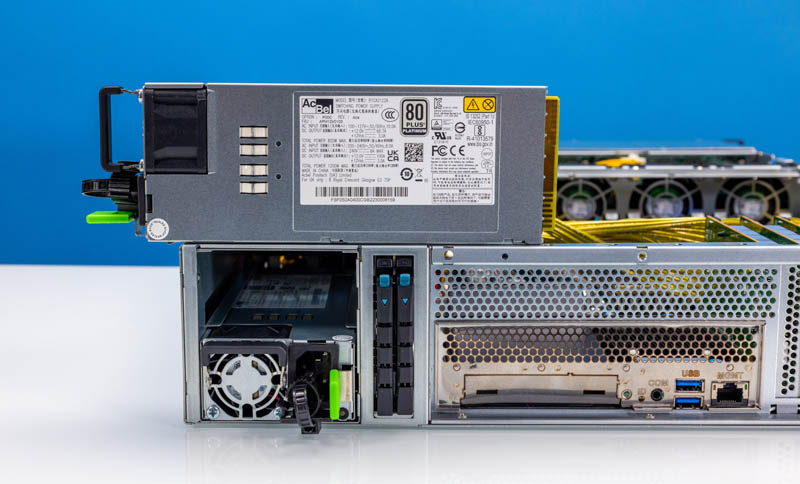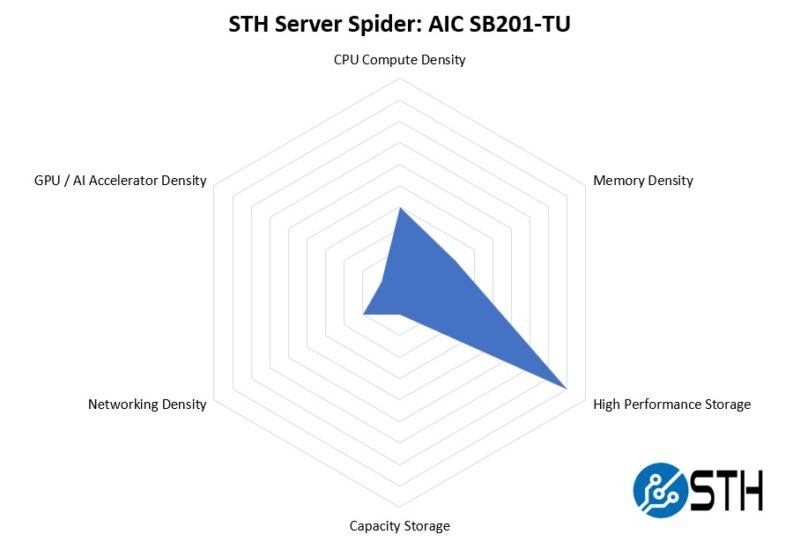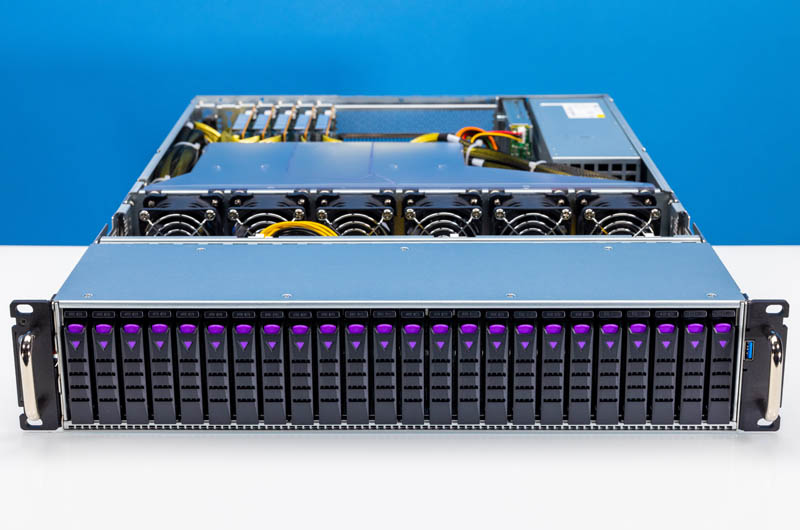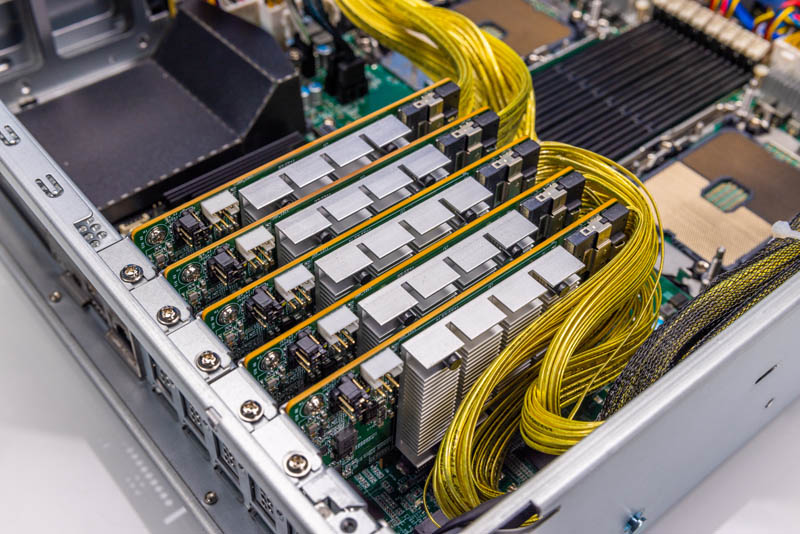AIC SB201-TU Power Consumption
The system came with two 80Plus Platinum 1.2kW power supplies. These power supplies would step down to only provide 800W in the 100-127V range, but provide full power at 200-240V.

With Intel Xeon Silver 4316 CPUs, we had an idle power of 185W, but then we got to power up to 722W when we were working off of all 24x SSDs simultaneously. The Xeon Silver 4316 only runs DDR4 at DDR4-2666 speeds and they are 15W TDP below the 165W target for the system. Also, there are a few more components that could be added and hotter drives that could be added. All of that is to say, at 100-127V 800W from the PSUs feels a bit tight on power. With 200-240V power where you could use the full 1.2kW, that would feel like a better amount of headroom. Our advice is that if you are looking for a higher-performance NVMe server get higher-end CPUs and make sure you are running on 200-240V so you can get the full power output of the PSUs.
STH Server Spider: AIC SB201-TU
In the second half of 2018, we introduced the STH Server Spider as a quick reference to where a server system’s aptitude lies. Our goal is to start giving a quick visual depiction of the types of parameters that a server is targeted at.

AIC has a very focused configuration that we tested. It maximizes NVMe storage, but at a cost. Networking is relegated to a single OCP NIC 3.0 slot. There are no additional slots for AI accelerators or GPUs. This is a very storage-focused configuration.
In many cases AIC is making platforms like these for other companies, like storage vendors, to use as their appliances. Unlike many companies that focus on flexibility, the point of this SKU is to focus on adding a lot of NVMe storage. We will note, however, that the platform has other configurations that have different front storage and therefore more expandability and customization options.
Final Words
Sometimes, you just need to get a lot of NVMe SSDs into a rack, and you do not want them to go through expanders. That is exactly what AIC is targeting with this AIC SB201-TU server (SKU5.)

Something that we appreciated, tearing down dozens of servers each year, is how committed AIC is to this mission without extraneous features. The motherboard used in this server is AIC’s Tucana which is used in a number of the company’s other servers. Using that common platform helps increase volume. In the server industry, higher volumes usually mean better quality because there are more users on a platform with different configurations. AIC then focuses on maximizing capabilities like pulling PCIe lanes from slots to the front panel using retimers. This is a straightforward design, but it is one that many vendors have gotten away from.

If you are instead thinking about 3.5″ capacity storage, the SB201-TU is probably the wrong platform for you. Instead, something like this AIC SB407-TU 60-bay storage server will make sense.
Overall, 24x 2.5″ PCIe Gen4 NVMe SSDs in a 2U server, without using PCIe switches is an awesome capability. AIC’s design allows one to add high-performance SSD storage directly attached to CPUs with minimal overhead. That is really interesting.




Sure would be nice to see more numbers, less turned into baby food. For instance, where are the absolute GB/s numbers for a single SSD, then scaling up to 24? Or even: since 24 SSDs are profoundly bottlenecked on the network, you might claim that this is an IOPS (metadata) box, but that wasn’t measured.
The whole retimer card – cable complex looks very fragile and expensive, it’s hard to believe this was the best solution they could come up with.
The vga port placement is a mystery, they use a standard motherboard i/o backplate, they could have used a cable to place the vga port there (like low-end low profile consumer gpus usually do)
The case looks little too long for the application. Very interesting server, not sure if it’s in a good way but at least the parts look somewhat standard
Reviews are objective but useful
We get 100GBPS Read and 75GBPS write speed on a 24 bay all nvme server. Ultra high throughput server with network connectivity upto 1200GbE.
Would love for you to take a look.